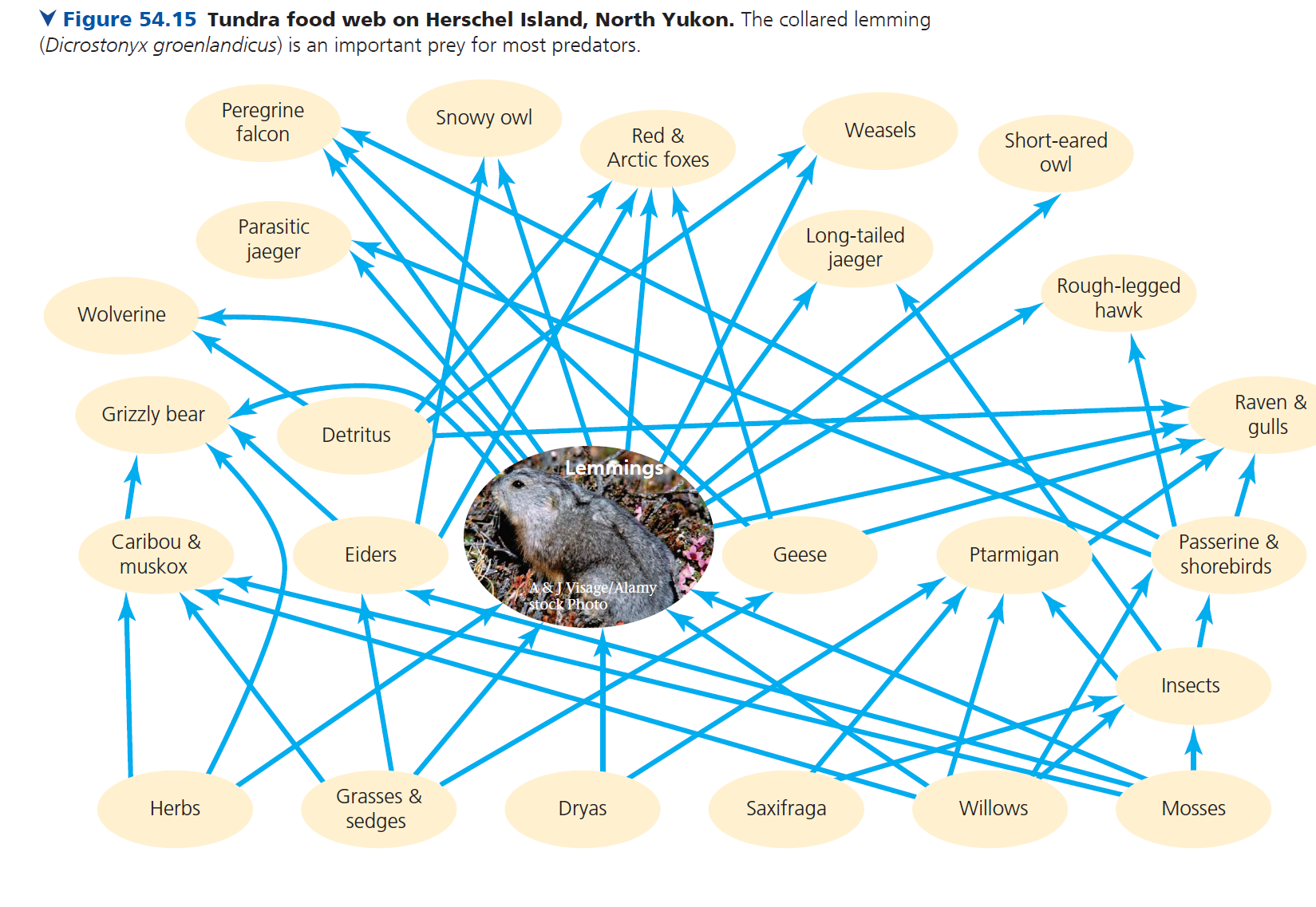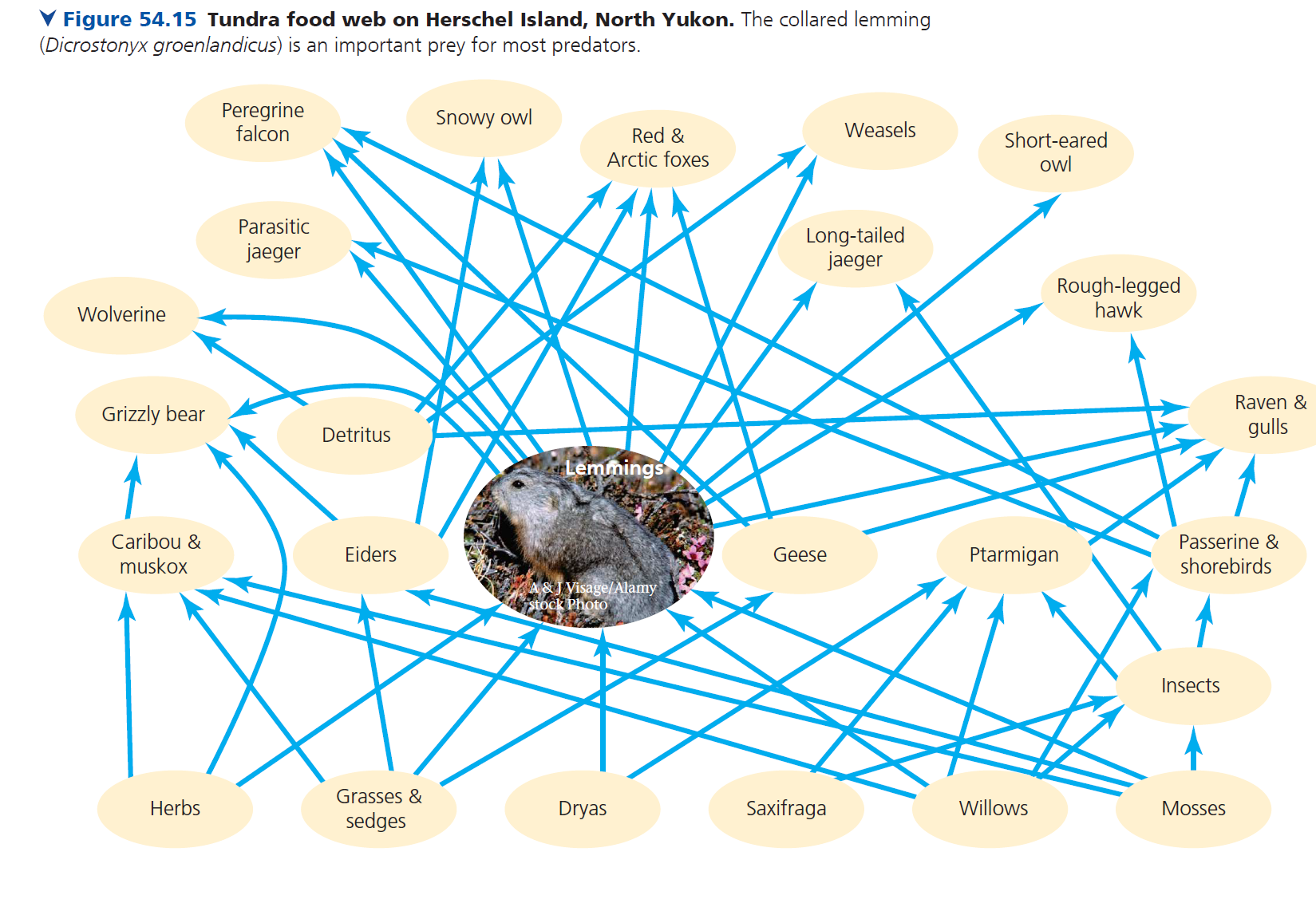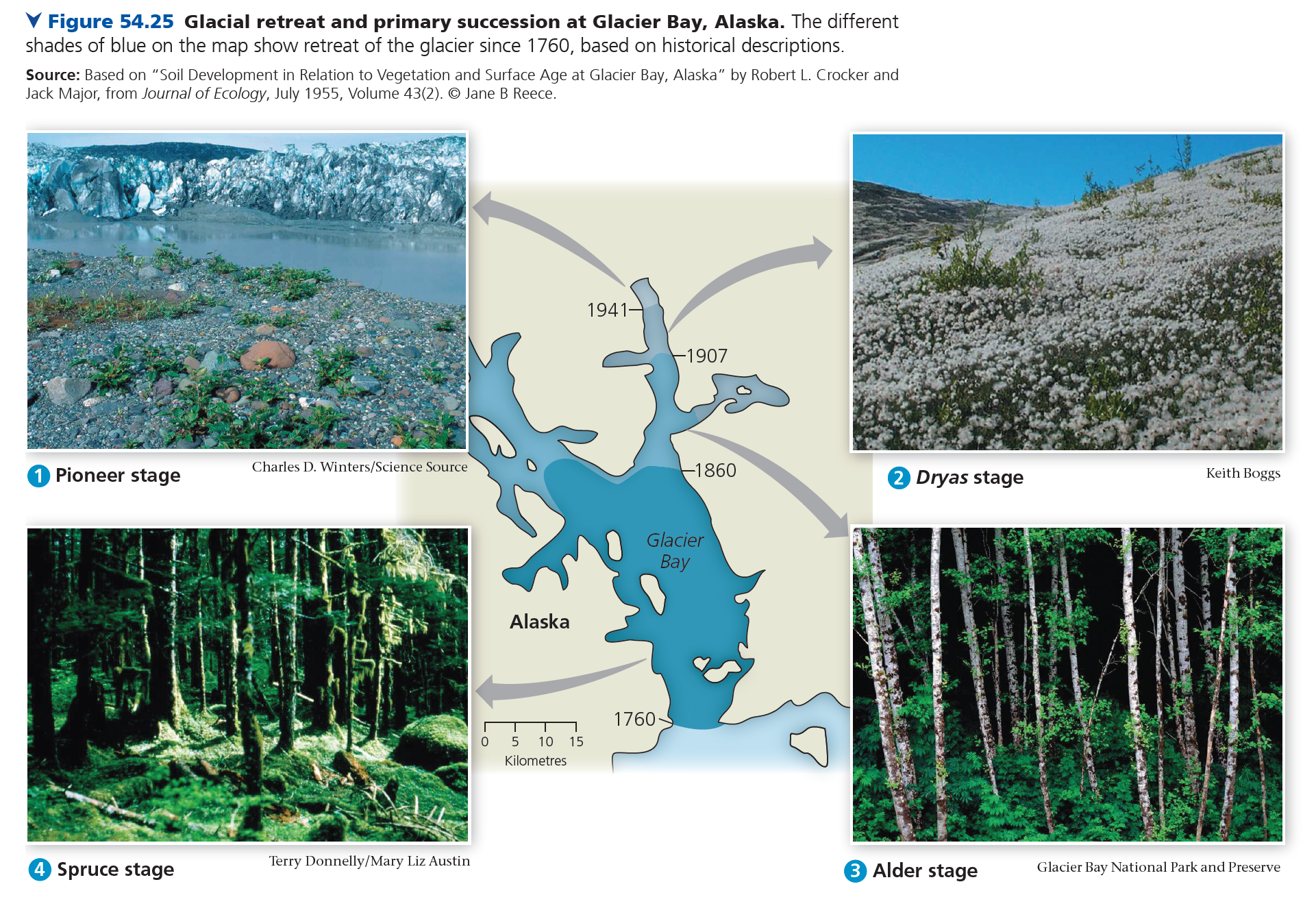Community ecology BIOL 1110
1/31
There's no tags or description
Looks like no tags are added yet.
Name | Mastery | Learn | Test | Matching | Spaced |
|---|
No study sessions yet.
32 Terms
What are interspecific interactions and why are they important in determining the structure of ecological communities?
They are the ecological relationships among different species in a community.
They are important because it determines species distribution, abundance and adaptations
Describe the plus-minus system for categorizing interspecific interactions.
Plus: means individual benefitted
minus: means individual is not benefitted
0: means individual is unaffected
What is an organism’s ecological niche?
How does this contrast with the organism’s habitat?
An ecological niche is how the organism lives: its role in the ecosystem
Habitat is where it lives, niche is how it lives
What is interspecific competition? How is competition categorized using the plus-minus system?
When two or more species compete for limited resources, resulting in reducing fitness in both
It is (-/-) as it negatively affects fitness because of competition
What resources do organisms in ecological communities compete for? Provide at least one example of interspecific competition.
Resources:
Food
Water
Light
Shelter
mates
A weed competing for nutrients with a flower
Lions and hyenas in the savanna hunting for zebra
Describe the concepts of competitive exclusion, resource partitioning and character displacement
Competitive exclusion:
Two similar species compete over a niche, and even a slight reproductive advantage will lead to the elimination of the competitor
Resource partitioning:
The differentiation in niches to allow for coexist
Character Displacement: Competition selects traits that reduce overlap ex: Darwin’s finches
What is predation and how does it differ from herbivory?How is predation categorized with the plus-minus system?
Predation is a (+/-) interaction between species in which one of them kills and eats the other.
It differs from herbivory (+/ -) because of eats part of the plant and may not usually kill
Can herbivory be considered as a form of predation?
Yes, it is (+/ -) interaction between plants and herbivores, it is a special type of predation as it can control ecosystems and population sizes.
Describe one or more examples of how prey species defend themselves against predators.
Tobacco plant: Nicotine
Mechanical defense: Cactus spikes
Mimicry: Mimics a dangerous species
Chemical defense: skunk
Contrast cryptic coloration with aposematic coloration and indicate how both can protect organisms against predators
Cryptic coloration: Camouflage
Aposematic coloration: Bright warning colors to deter potential predators
What is mimicry and how can mimicry defend an organism against predator attack?
Mimicry is when one species resembles another to gain protection from predators, therefore reducing predation
A harmless species can mimic a harmful one: Batesian mimicry
Describe two different types of mimicry involved in predator-prey relationships.
Batesian mimicry: Harmless species mimics a harmful one
Mullerian mimicry: Multiple harmful species share the same warning appearance
Define parasitism, give its plus-minus outcome, and provide one or more examples of parasitism
Parasitism is a +/– interaction where the parasite benefits and the host is harmed. However the host is not killed as they depend on them for survival
Tapeworms in mammals and ticks on dogs
Distinguish between endoparasites and ectoparasites and provide one example of each for a specified host.
Endoparasites: Live inside the body of the host, inhabiting tissues or organs like intestines, blood or muscles
Ectoparasites: Live on the external surface (outside) of the hosts body like skin and fur
What is symbiosis and name the 3 types of symbiosis
Symbiosis is a close long-term biological relationship between two different species and at least one species benefits
Mutualism
Commensalism
Parasitism
Define mutualism, give its plus-minus outcome, and provide one or more examples of mutualism
A symbiotic relationship where both species benefits both species.
It is a (+/+) interaction:
Sea anemone and clownfish: Protection and parasite protection
Bees and flowers: pollination for the plant, food for the bee
Define commensalism, give its plus-minus outcome, and provide one or more examples of commensalism.
Commensalism is a symbiotic relationship in which one species benefits and the other is neither harmed nor helped
(+/0):
Barnacles attaching to whales for free transport and feed on plankton
Cattle egrets follow cows or buffalo as they graze, then eat the insects
Why are commensal interactions difficult to document in nature?
Its hard to prove because even when a species might seem unaffected they may gain small indirect effects that are hard to prove.
What are primary producers? By which process do most autotrophic organisms produce biological materials?
Primary producers are autotrophic organisms that make their own food, and most do so through photosynthesis, and chemosynthesis: inorganic chemical reactions instead of sunlight and water.
Explain the terms primary consumer, secondary consumer and tertiary consumer.
Primary consumer: Herbivore: eats plants and primary producers
Secondary consumer: eats primary consumers: Herbivores
tertiary consumer: Carnivores that eat other carnivores
What are detritivores or decomposers? What is their function in ecological communities?
Detritivores/Decomposers are individuals who get their energy from detritus, non-living organic material.
Their function is to recycle nutrients and returning them to the ecosystem, giving back to the primary producers to cycle matter.
Ex. Fungi or worms
Describe the pattern of energy and nutrient flow in an ecosystem
Energy always flows one way via the nutrients cycle:
Producers-Consumers-decomposers-organic material
Describe examples of terrestrial and marine food chains
🌱 Grass → Grasshopper → Frog → Snake → Hawk
🌿 Phytoplankton → Zooplankton → Small fish → Tuna → Killer whale

What is a food web? How do food chains and food webs differ?
A food chain only describes one energy path, but a food web interconnect many paths. This means its more accurate as it illustrates how energy is flowed thorough different species, and how one species doesn’t just rely on one food source.

What do arrows represent in food chain or food web?
Arrows point from prey to predator, representing the flow of energy through the community.

What is trophic efficiency? Why is the transfer of energy from one trophic level to the next inefficient?
Trophic efficiency = the percentage of energy transferred from one trophic level to the next
Its usually inefficient because only 10% of energy stored in the organic matter in each trophic level is transferred to the next:
1. Energy loss through respiration, movement, heat
Not all biomass is digested/eaten
Thermodynamics stats that transformations always lose heat
Why would a tertiary-consumer organism be more vulnerable to extinction than a primary-consumer organism?
They are at the end of the energy chain: Less food at the higher trophic levels and they rely on a lot of lower levels to work so they can have food
Compare and contrast primary and secondary succession, noting their similarities, the starting conditions of each, the sources of new species, and the timeframes over which they occur.
Primary: Occurs on newly exposed lifeless surface: after an eruption
Secondary: Occurs on land with soil intact: Deforestation
Similarities: Both involve orderly replacement of species
source of new species: Airborne spores and seeds and animals from surrounding area
timeframes: can take hundreds to thousands of years
Describe four or five principal methods by which lichens altera bare rock environment to make it more hospitable for other plant species.
Lichens are a symbiosis of fungus and cyanobacterium
Breaking down rock through fungal acids
Trapping dust and debris which mix with them to form thin soil
retaining moisture via more humid micro-environment
Adding organic material: lichens die and enrich soil with nutrients
Provide shelter for smaller insects and microbes
Over time, bare rock becomes soil-bearing ground capable of supporting mosses, grasses, and eventually shrubs and trees.
Explain why lichens pioneer species are replaced by other species during succession
Pioneer species modify their own environment — they improve soil, increase shade and moisture, and change nutrient conditions.
They make it more suitable for other species and then some of them outcompete the lichens

Describe the process of primary succession on glacial moraines from recently exposed bare rock to climax community.
(Discuss environmental changes when one species gives way to another)
Stage 1: Pioneer stage: Lichen and moss colonize rock
Stage 2: Dryas grows on developing soil adding organic matter and nitrogen as it dies and decomposes
Stage 3: Alder shrubs dominate supporting more plant growth via nitrogen-fixing bacteria
Stage 4: Sitka spire and hemlock trees establish forming a stable forest
Explain why the climax community in the flat area is a sphagnum bog while the climax community on the slope is a forest
Flat areas drain poorly so it favors moist and moss growth, which forms a bog climax community
Slopes have better drainage and aeration allowing the soil to stay drier. This favors trees, creating a forest climax community